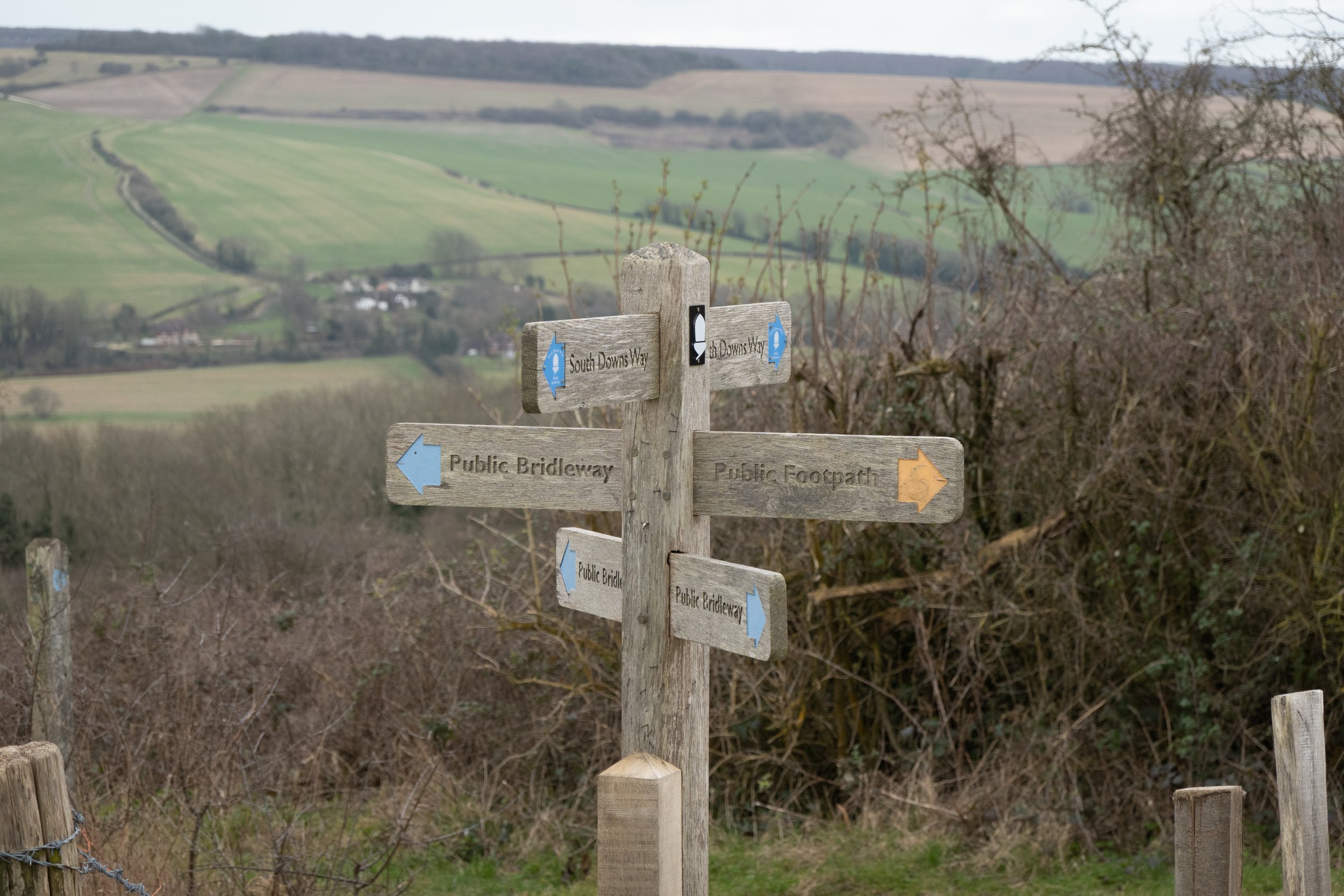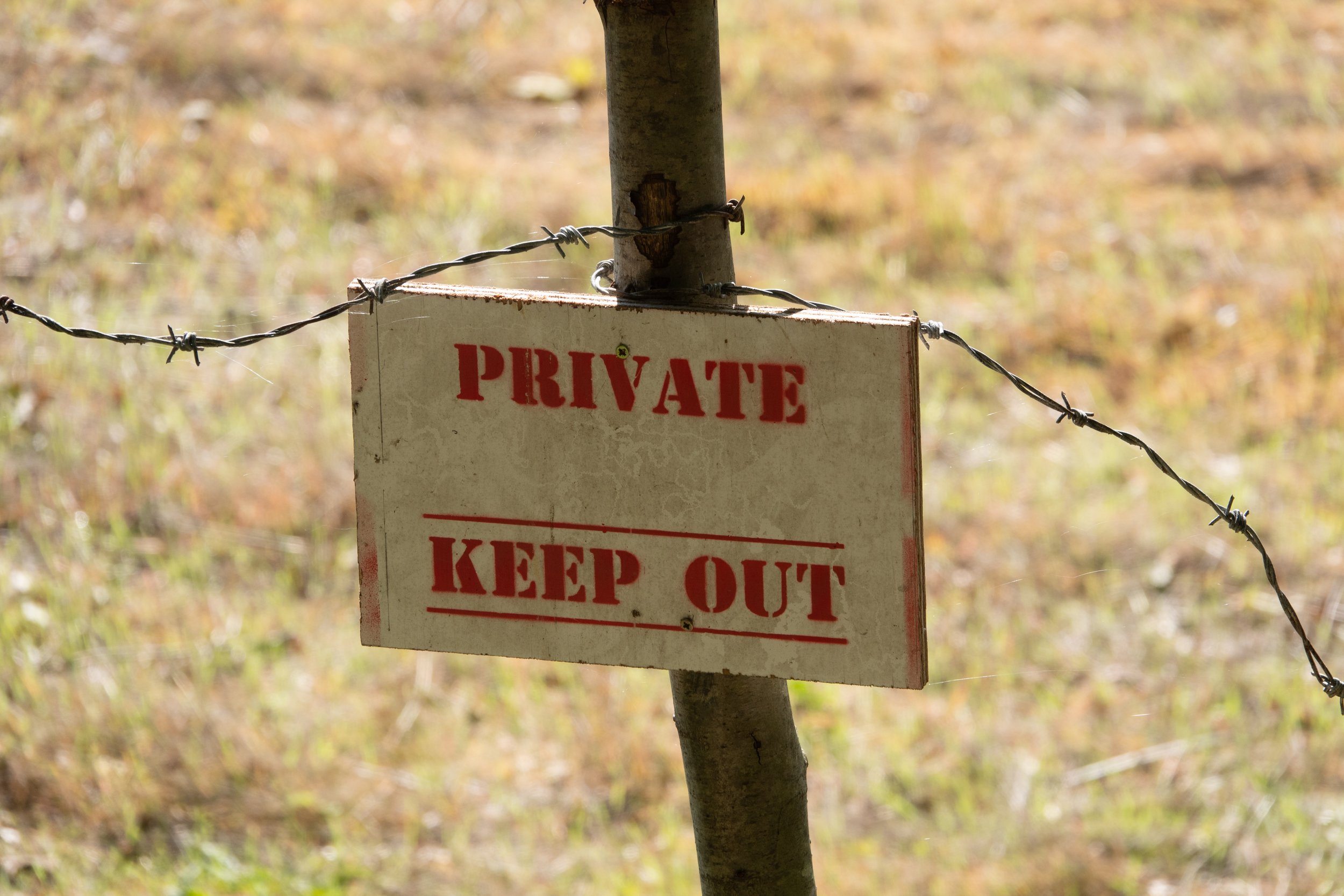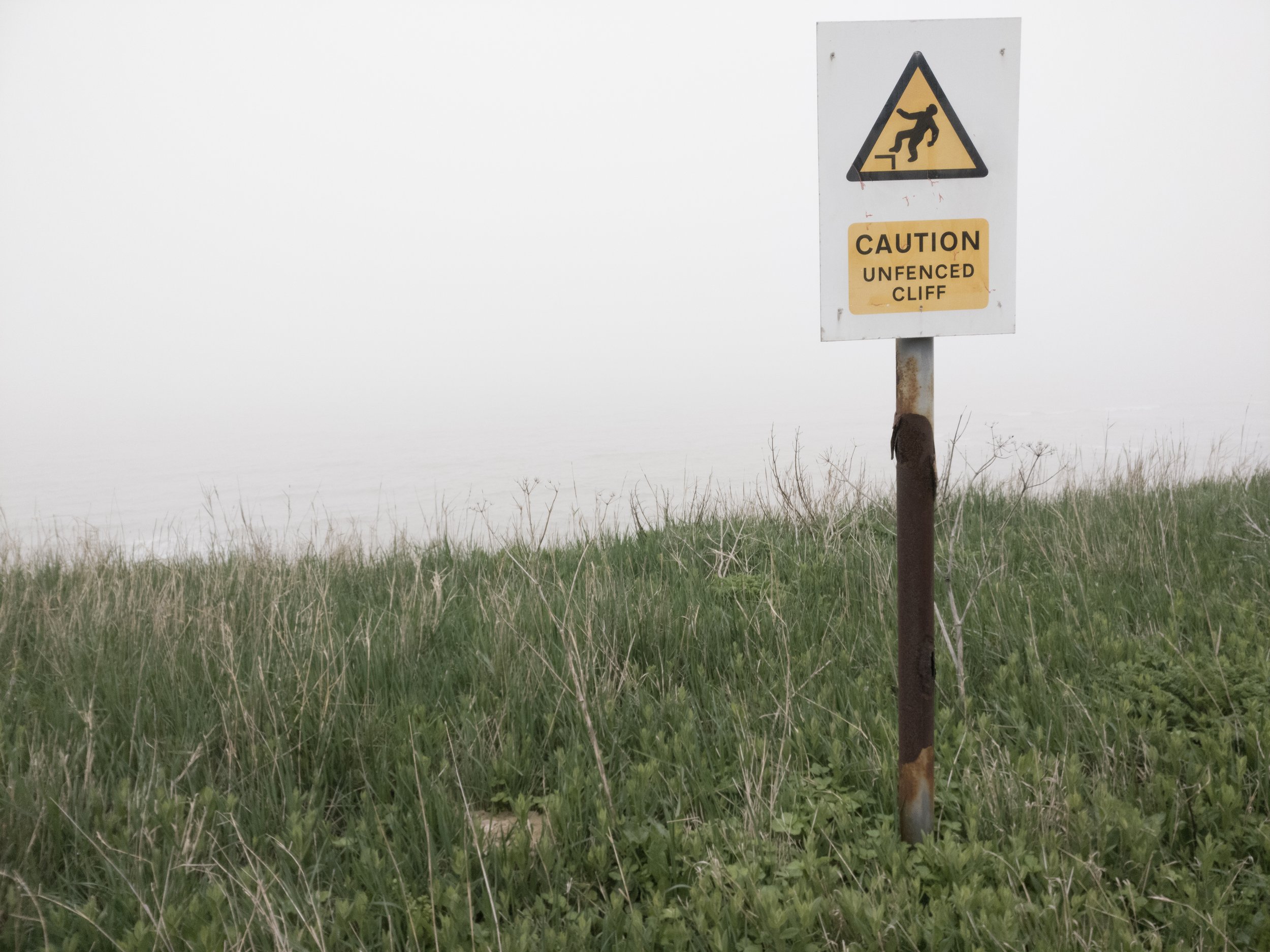Pointing the Way
Stefan Czerniawski
New fingerposts ready to be put up on the South Downs Way
Signs on footpaths come from many sources and have many purposes, as the recent post by Abbi Flint, Rebecca Lovell and Sonia Overall on Reading the signs has reminded us. But their primary purpose is to provide a service and as with all services, the service is provided with the intention of meeting a need. This post looks at signs primarily from that perspective, both to understand those needs and to consider how well they are addressed.
There is a fairly standard format for capturing user needs, which has three elements: the role the person is playing; the need that person has; and the purpose which meeting the need will achieve. In this context, we might capture the need in this way:
As a walker
I need to be confident about the path I am on
So that I can enjoy my walk and reach my intended destination
There are two immediate points to note about those statements. The first is that there are other users of public Rights of Way, such as cyclists and horse riders, whose needs might be different. That wider set of needs should be considered by designers of signage but is not discussed further in this post, not because they are not important, but because I come at these issues as a walker. The second is that they make no mention of signs at all. Signs are one way of meeting the need, but the need is not for signs - it is for confidence and direction.
That’s not an entirely abstract point. Signs are very real and often very useful, but they are often only one element of a larger direction-finding system, which might include maps, GPS trackers, landscape features, or simply local knowledge. Some people have better access to or better confidence in using some of those elements than others, from which it follows that some people are in greater need of the help and assurance which signs can provide than others.
Within that wider direction-finding system, there is a set of needs which signs can meet, raising the question of how well they do that in practice. There may also be needs which signs could meet, but don’t attempt to, or perhaps could not meet at all. As a starting point, there are three questions a sign might answer:
Is this a path at all? Do I have the right to be here?
Where will this path take me?
How far away is that destination? How long will it take to get there?
The most basic purpose of footpath signs is to tell us first that something is a footpath and more particularly that there is a Right of Way. Generally speaking, if something looks like a road, it is one. If something looks like a path, it may not be one at all. It is the sign poking through the hedgerow at the side of the road which signals that there is a path to be found, and that it is one which can be taken. That perhaps explains why many of those signs do no more than that - the simple message 'Public Footpath' is enough without any attempt at explaining where the path might lead to or how far away that might be.
So there is an implication that if you have arrived at such a sign, you know those things, you know whether you want to choose that path and therefore have at least some inkling as to why. The information signs do not provide can be as significant as what they do say.
Not all signs are terse, of course. Some are rich in information. This one names the route, the destinations along it, and the distances to them. It is not just more informative. For most people it is probably sufficiently informative to be a more than adequate guide to navigation.
Fingerpost on the Green Chain Walk at One Tree Hill
But many signs, even those apparently pointing firmly in specific directions, tell you only that you can go in those directions. Here's a point where three paths cross, with a finger post meticulously made to point accurately in six directions.
Six way fingerpost on the South Downs Way above Alfriston
But despite the colourful arrows, four of the six pointers tell you only what kind of traffic is permitted and the other two add only that you are on a named route, with no indication even of which direction is which. If you happen to be walking the South Downs Way, the sign confirms that you are still on track. If you have any other intention, however, you know there is a choice to be made, but are offered little help in making it. These signs pass the first test, since they very clearly communicate that there are paths here and that the walker is entitled to be here, but they make no attempt to explain where each of the six directions lead to or to give any sense of how the distance walked so far compares with the distance still to go.
Some signs edge further still towards the performative. Again from the South Downs Way, this one points in one direction to Winchester and in the other to Eastbourne. That is unarguably correct. Those are the end points of the path and there is indeed a symbolic message in emphasising that it is possible to walk from one end to the other. But nobody is walking past that sign with the intention of going to either of those places that day, and few going past it will have them as their destination at all.
Fingerpost on the South Downs Way near Ditchling Beacon
All of those example, come from what might be termed set piece occasions. Even on long distance footpaths with names and aspirations, they are in the minority. More common and less obtrusive are the nudges and reminders, this way rather than that, through this gate, across this field to an unseen further side in roughly that direction. Sometimes they provide necessary information, but sometimes they simply provide assurance: this is still that path, you are not lost, do not be beguiled into making a wrong turn.
Waymark in Henley Wood
The purpose is captured in the stately language of the Countryside Act: ‘it shall also be the duty of a highway authority [...] to erect such signposts as may in the opinion of the highway authority be required to assist persons unfamiliar with the locality to follow the course of a footpath bridleway, restricted byway or byway’.
There is a rhythm to good way marking. Signs should not and need not clutter the landscape, but should come into view when there is a choice to be made or, more subtly, when the walker may start to worry that they have drifted from the correct route. The intention, as expressed in the official guidance produced by Natural England on waymarking rights of way, is that ‘waymarking enables users to follow a path accurately and confidently at points where they might otherwise have difficulty’. But this comes with the proviso that ‘the number of waymarks should be kept to the minimum necessary to make the route clear’.
That is a clear statement of intention, but with some inevitable uncertainty, as one person’s minimum necessity may be another’s cluttered landscape. While it is easy to see signs and assess their utility, it is less easy to see the absence of signs and the missing information they might have provided.
There are of course many reasons for the mismatch between what might be useful and what is actually provided. Some of those reasons are common to many other aspects of the public realm - neither people nor money are readily available to maintain, let alone improve, the marking of Rights of Way. It is understandable that that isn’t a priority, particularly on little-used paths (though it could be argued that that is where the need is greatest).
But there is perhaps a less obvious reason too. There is always a risk in creating instructions of any kind that the authors of the instructions already know too much, because they are already very familiar with the product or service concerned. So the assumptions they make about what new users actually need are at risk of being wrong because the experts find it hard to reproduce the necessary state of ignorance. People who place signs and waymarks along Rights of Way already know where they are going; they may or may not make good judgements about the needs of people who don’t.
The Natural England guidance makes the sensible suggestion that ‘once all of the waymarks are in place it is useful to arrange for someone who does not know the path to make sure the whole route can be followed accurately and without difficulty’.
That is exactly the right test. It doesn’t matter how many signs there are. It matters whether somebody can use them to find their way - and that is best tested by trying it out.
Everybody who follows a path repeats that test, and not surprisingly the results are very varied. Sometimes waymarking is done unobtrusively well. Sometimes it is done excessively. And sometimes it is done - or not done - bafflingly inappropriately.
Here for example is a clear way ahead along a broad and well-maintained avenue. But that isn’t the right way to go. To continue on the long-distance waymarked path, you must turn left, with the small gap in the fence providing the only clue (and even close up, the prospect is not exactly reassuring).
The apparent way ahead on the London Outer Orbital Path at Lockwell Wood…
…And the unmarked actual route of the London Outer Orbital Path
Even allowing for these glitches and oversights, there are more persistent assumptions. A sign may tell you that you are on a public footpath, but if you want more than that, to know where you are and where you are heading, you need something else as well. Signs are often useful, sometimes necessary, but they are placed with the assumption that they are not sufficient. Additional information can come from the wider landscape, it can come from information brought by the walker - or simply be local knowledge from long acquaintance.
Often the clearest sign that all is well will be the path itself. Once established on a route, it is often possible to go for long distances with little real risk of going wrong - and that is frequently true even when the route is far from straight.
Straight path through a flax field, Dunk’s Green
But what if you miss a turning, guess wrongly which side of a hedge to walk along, or take the wrong fork? If you had got it right, you might be reassured to find a waymark confirming that all was still well. But if you got it wrong, there may be nothing to tell you so - or at least nothing from the providers of formal signposting. That's where all the other signs come in which Reading the signs explored. They operate on their own terms, of course, but however negative the intent, they can often have a useful secondary message - you may think this is the way to come, but you are wrong. Some are terse and unwelcoming.
‘Private, Keep Out’ sign on the North Downs Way
Others provide graphic descriptions of the dangers of failing to follow the true path.
‘Caution: Unfenced Cliff’ sign on the Thanet Coastal Path at Birchington
‘Warning: Troops Training’ sign on the South West Coast Path at Holywell
‘Metropolitan Police Dogs in Training: Keep Out’ sign on the London Outer Orbital Path
However stark or unfriendly, though, all of these signs taken together can help confirm that you are on a path and warn you when you are at risk of unintentionally leaving it. It can give you confidence that you have the right to be where you are, and that if you keep going you will arrive somewhere. But it’s not enough always to provide confidence that you are on the path you meant to be on or that you will arrive at the place you intended to go to.
More signs which simply confirm the existence of Rights of Way can’t help with that, though more signs which include information about distances and destinations might be useful for some. But it’s worth repeating that the user need is not for signs, but for confidence and direction.
Beyond explicit waymarking and the subtle and less subtle clues the physical landscape provides, there is a third source of assurance - the information the walker carries with them. Not many years ago, that would have meant a paper map, printed directions or a guidebook. For many people these are still essential tools. All can be useful in explaining where you should be, though none are able to tell you where you actually are. Even with a high quality map, it’s not always straightforward to work that out just from observing the landscape around you. In that world, a signpost or waymark could be a critical data point to confirm location and restore confidence.
Now of course most people (though of course not all) routinely carry a device which can tell them where they are with great precision. By itself, that’s less useful than it might first appear. Where you are is only important in relation to where you want to be, and the relationship between the two is only apparent from a sufficiently detailed map showing sufficiently accurate location information.
The Ordnance Survey app, of course, provides exactly that service at a level of precision which is more than adequate for most purposes. So it is possible to imagine a world in which digital tools of this kind displace the need for physical navigation aids altogether, though there are two important reasons why that world is not yet imminent.
The first is cost - the annual subscription for the OS app is £28.99, which is a price many will not be willing or able to pay. It also requires at least basic skills in map reading, though the presence of the GPS indicator makes the task much simpler than with a paper map.
The second reason is precision. All maps are imperfect representations of the real world and even high quality OS maps can only approximate reality. It’s perhaps hardly surprising that a network of paths in thick woodland might not have been surveyed fully and recently, it's less obvious until faced with a tricky navigational choice that the map may just not be sufficiently fine-grained to provide a clear answer.
So physical signs and aids are a very long way from being redundant. Even people who don't rely on them as their primary guide still derive confidence from them. Signs are not best thought of as a wholly self-contained system, but as a component of a much wider - and less immediately visible - system of navigation and assurance. That wider system will continue to evolve, so the relative significance of waymarking will continue to change.
But in the meantime, there is one more thing which signs can do. They can tempt and promise, suggesting that nearby there are good things to be found, even if they can't yet be seen. Sometimes those signs can be the most welcome of all.
‘To the Pub’ sign on the South Downs Way above Southease












